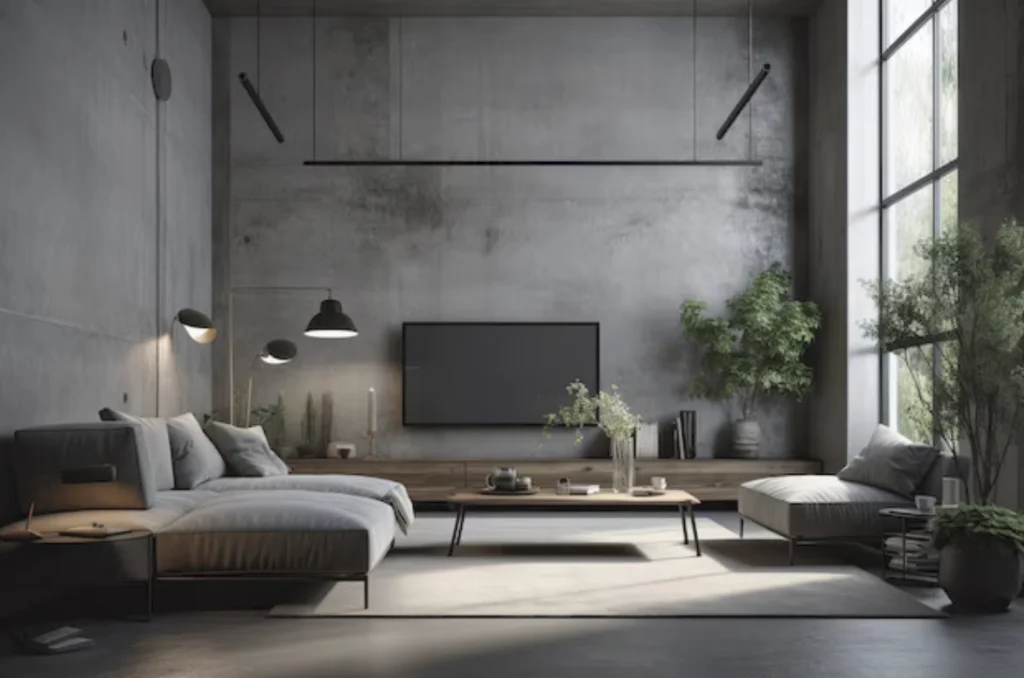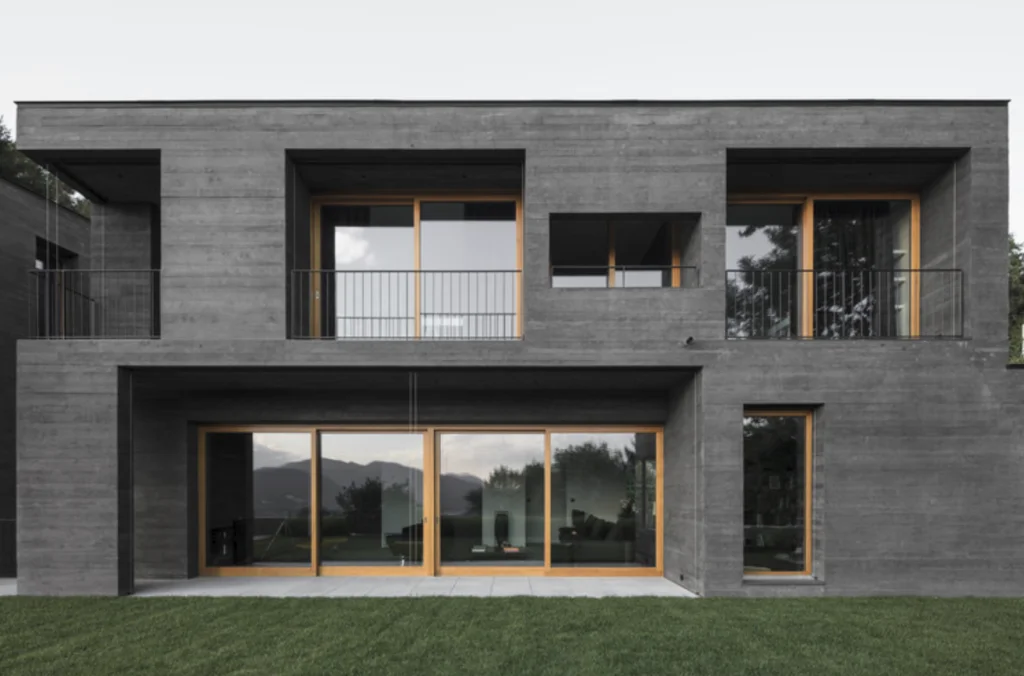Concrete is no longer limited to its traditional gray hue. In modern design, concrete has evolved into a versatile material that can be customized in a variety of shades and finishes. Whether you’re considering concrete for flooring, countertops, or walls, choosing the right color can dramatically impact the look and feel of your home. But how do you select the perfect shade of concrete? In this article, we’ll guide you through the process of picking the right color to match your home’s aesthetic and functional needs.
Why Color Matters in Concrete Design

The color of concrete plays a significant role in the overall atmosphere of a space. A concrete surface’s color can shift the mood from cool and industrial to warm and inviting. Depending on your personal style and the space you’re working with, different shades can create entirely different vibes.
The Versatility of Concrete Colors
Concrete can be stained, dyed, or painted to produce an array of colors—from soft, neutral tones to bold, vibrant shades. Some concrete finishes offer subtle color variations, while others create dramatic contrasts. This flexibility means you can tailor concrete to suit any design style, whether you’re aiming for minimalism, industrial chic, or a rustic vibe.
Factors to Consider When Choosing Concrete Colors
Before diving into specific shades, there are several factors you should consider when picking the right concrete color for your home.
1. The Space You’re Designing

The room or outdoor area where the concrete will be used is crucial. Different spaces may call for different colors based on their function and lighting conditions.
- Living Rooms: Opt for warmer tones to create a cozy atmosphere.
- Bathrooms: Cooler tones can give a clean, spa-like feel.
- Outdoor Areas: Consider earthy or natural tones that complement your garden or patio.
2. Lighting Conditions
Natural and artificial lighting will affect how the concrete color looks in your space. Darker shades might absorb light and make a room feel smaller, while lighter shades can reflect light and brighten the space. Make sure to observe the concrete samples in different lighting conditions before making a final decision.
3. Existing Décor and Materials
Your concrete color choice should harmonize with the other materials and colors in your home. For example, if you have a lot of natural wood elements, earthy or neutral concrete tones might complement them better. On the other hand, sleek, modern interiors with glass or metal accents might pair well with cooler or darker shades.
4. Mood and Ambiance
What feeling do you want to evoke in the room? Cool grays and blues offer a modern, sleek look, while warm beiges and browns create a more inviting and relaxed atmosphere. The shade of concrete you choose can directly impact how the space feels.
Popular Concrete Colors and Their Uses

1. Classic Gray
Gray is the most common and recognizable shade of concrete. It offers a timeless, industrial aesthetic that can be used in a variety of ways. Gray concrete works particularly well in modern and minimalist designs, as it creates a sleek, neutral backdrop for other elements in the space.
- Where to use: Kitchens, living rooms, and outdoor patios.
- Design style: Industrial, modern, minimalist.
2. Warm Beige and Sandstone
Warm beige and sandstone tones bring a sense of softness and comfort to concrete surfaces. These colors mimic natural stone and are ideal for creating a more relaxed, welcoming atmosphere.
- Where to use: Bedrooms, bathrooms, and outdoor areas.
- Design style: Rustic, bohemian, or traditional.
3. Earthy Browns
For a more grounded and earthy feel, browns are an excellent choice. Brown concrete works particularly well in outdoor settings, blending seamlessly with natural elements like wood and stone. It can also add a rustic touch to indoor spaces.
- Where to use: Patios, garden pathways, and living areas.
- Design style: Rustic, country, or farmhouse.
4. Soft Whites and Off-Whites
If you’re looking to create an airy, light-filled space, soft white or off-white concrete is a great option. This shade can open up smaller spaces, making them feel larger and more inviting.
- Where to use: Bathrooms, kitchens, and living rooms.
- Design style: Contemporary, Scandinavian, or minimalist.
5. Charcoal and Dark Gray
For a bold and sophisticated look, charcoal or dark gray concrete is an excellent option. These darker shades make a striking statement and pair well with metallic finishes or bold accent colors.
- Where to use: Entryways, feature walls, and modern outdoor spaces.
- Design style: Modern, industrial, or urban chic.
6. Pastel Hues
Although less common, pastel-colored concrete can add a unique and playful touch to your home. Soft pinks, blues, and greens can bring personality and vibrancy to a space, while still maintaining the durable qualities of concrete.
- Where to use: Kids’ rooms, bathrooms, or accent walls.
- Design style: Eclectic, contemporary, or mid-century modern.
7. Stained or Dyed Concrete
Stained or dyed concrete allows for a wide range of custom colors. Stains can penetrate the concrete and create a more natural, variegated appearance, while dyes offer vibrant, uniform colors. These techniques are perfect for those looking to achieve unique color effects.
- Where to use: Floors, countertops, and outdoor spaces.
- Design style: Custom, eclectic, or artistic.
Tips for Choosing the Right Concrete Color

1. Test with Samples
Before committing to a specific shade, always test out concrete color samples. Apply them to a small area and observe how the color looks under different lighting conditions throughout the day.
2. Consider the Long-Term Look
Concrete is a long-lasting material, so think about how the color will age over time. Some finishes, like stains, can develop a patina that enhances their appearance. However, bold colors may fade or look dated after a few years, so it’s essential to choose a color you’ll love for the long haul.
3. Complement, Don’t Overwhelm
Your concrete should complement the other design elements in your home without overpowering them. If you already have bold colors in the room, opt for a neutral or subtle shade of concrete. On the other hand, if your space is neutral, a bold concrete color can add a striking focal point.
4. Think About Texture
The texture of the concrete can also affect how the color is perceived. For example, a polished finish might make the color appear richer and more reflective, while a matte finish might soften the tone. Experiment with different textures and finishes to see how they interact with your chosen color.
Using Concrete Colors to Define Spaces
Concrete doesn’t have to be the same shade throughout your home. You can use different colors in different areas to define and distinguish spaces. For example, a darker shade in a living room can create a cozy, intimate feel, while a lighter shade in the bathroom can evoke cleanliness and tranquility. This technique allows you to create a cohesive yet varied aesthetic throughout your home.
Conclusion
Choosing the right shade of concrete for your home is more than just picking a color; it’s about creating a mood, enhancing your design style, and ensuring long-term satisfaction. From classic grays to vibrant pastels, the color options for concrete are vast and varied, offering endless possibilities for customization. By considering the room’s function, lighting, existing décor, and your personal style, you can confidently select a concrete color that will elevate your space and stand the test of time.
FAQs
- Can concrete colors fade over time?
- Yes, concrete colors can fade due to sun exposure or wear, but proper sealing and maintenance can slow this process.
- How do I match concrete color with my home’s décor?
- Choose shades that complement the materials and colors already in your space. Neutral tones work well with most design styles, while bolder colors can be used as accents.
- Can I change the color of my existing concrete?
- Yes, you can stain or dye existing concrete surfaces to achieve a new color.
- Is colored concrete more expensive than standard gray?
- Colored concrete may be slightly more expensive, depending on the coloring technique used (staining, dying, or pigmenting).
- What’s the best way to maintain the color of concrete?
- Regular cleaning and resealing will help maintain the vibrancy of your concrete color and protect it from wear and fading.
